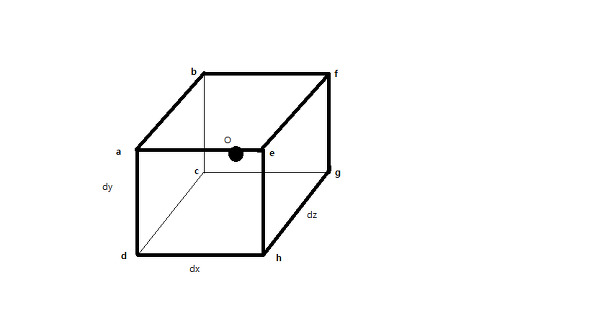1) Gradient, Divergence, Curl and Laplacian
Mathematics - Tensor Calculus ·I took the work I’d done 5 yrs ago.
cf) I would inform you the calculation is done in what surface once.
I will use just a picture to explain you Grad, Div, Curl, and Laplacian.
1) Grad
When a scalar function Φ is defined, The gradient of Φ, Grad(Φ), is like below:
Let us analysis above formula at origin O. ∫φdσ on Cartesian Coordinate for each plane is expressed like below:
We would approximate above partial derivatives as constant, since their change is significantly small in infinitesimal space. For this reason, generally integral symbol can be dismissed, and result is:
And, the below formula is
, As seen above, Grad(Φ) is
.
2) Div
When a vector function V is defined, the divergence of V, Div(V), is like below:
Let us analysis above formula at origin O. ∫V·dσ on Cartesian Coordinate for each plane is expressed like below:
If integral symbol is dismissed,
And then
As we’ve seen before, Div(V) is
3) Curl
When a vector function V is defined, the curl of V, Curl(V), is like below:
Let us analysis above formula at origin O. ∫dσXV on Cartesian Coordinate for each plane is expressed like below:
(1)
(2)
(3)
The addition of amount along the direction dx, dy, dz, this value would be (1) + (2) + (3). If integral symbol is dismissed,
So the Curl(V) is proved to be like below:
4) Laplacian
When a scalar function Φ is defined, the laplacian of Φ, ∇^2_Φ, is like below:
(1)
(2)
(3)
If (1) + (2) + (3), the result is like:
If integral symbol is dismissed and divided by d(tau),
We’ve introduced the expression of Grad, Curl, Div, and Laplacian for cartesian coordinates and have just finished to find out whether they’re actually right.
- References
- Mathematical Methods for Physicists, 1st ed., ARFKEN & WEBER, ch.1, Vector analysis, p. 58<
- In the same book, p. 63
